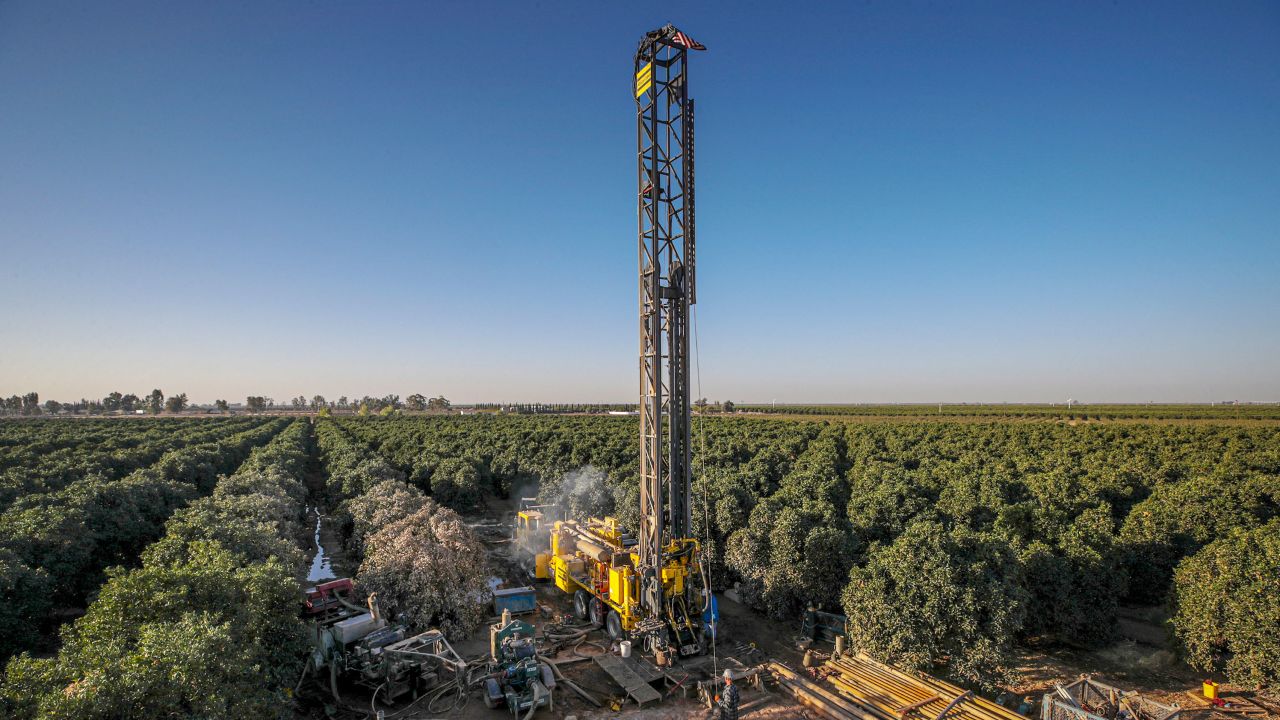Groundwater extraction to provide communities with drinking water and irrigation has pulled so much moisture out of the earth, it’s tilting the planet’s axis. The Earth’s axis shifted about 31 inches to the east over the course of about two decades — roughly 1.7 inches a year — because of our need for groundwater, according to new research. While people do not feel the Earth rotating, shifts to its rotational axis could cause further changes to the climate and impact GPS systems for cell phones, weapons and planes.
By Jordyn Dahl, Editor at LinkedIn News
Humans pump so much groundwater that Earth’s axis has shifted, study finds

Humans’ unquenchable thirst for groundwater has sucked so much liquid from subsurface reserves that it’s affecting Earth’s tilt, according to a new study.
Groundwater provides drinking water for people and livestock, and it helps with crop irrigation when rain is scarce. However, the new research shows that persistent groundwater extraction over more than a decade shifted the axis on which our planet rotates, tipping it over to the east at a rate of about 1.7 inches (4.3 centimeters) per year.
That shift is even observable on Earth’s surface, as it contributes to global sea level rise, researchers reported in the study published June 15 in the journal Geophysical Research Letters.
Earth’s drifting axis
You might not be able to feel Earth’s rotation, but it’s spinning on a north-south axis at a rate of about 1,000 miles per hour (1,609 kilometers per hour).
The ebb and flow of seasonal change is linked to the angle of the planet’s rotational axis, and over geologic time, a wandering axis could affect climate on a global scale, said Surendra Adhikari, a research scientist at NASA’s Jet Propulsion Laboratory, in the release. Adhikari was not involved in the study.
Earth’s interior is layered with rock and magma surrounding a dense, hot core. But in the outermost rocky layer, there are also vast quantities of water. Below the planet’s surface, rocky reservoirs known as aquifers are estimated to contain over 1,000 times more water than all the surface rivers and lakes in the world.

In 2016, another team of researchers found that drift in Earth’s rotational axis between 2003 and 2015 could be linked to changes in the mass of glaciers and ice sheets, as well as the planet’s reserves of terrestrial liquid water.
In fact, any mass change on Earth, including atmospheric pressure, can affect its axis of rotation, Seo told CNN in an email.
But axis changes caused by atmospheric pressure shifts are periodic, which means that the rotational pole wanders and then returns to its prior position, Seo explained. Seo and his colleagues had questions about long-term changes to the axis — specifically, how groundwater contributed to that phenomenon. It had not been calculated in prior research.
Revealing groundwater extraction’s impact
Shifts in Earth’s axis are measured indirectly through radio telescope observations of immobile objects in space — quasars — using them as fixed points of reference. For the new study, scientists took the 2010 data about groundwater extraction and incorporated it into computer models, alongside observational data about surface ice loss and sea level rise, and estimates of rotational pole changes.
The researchers then evaluated sea level variations “using the groundwater mass change from the model,” to pinpoint how much of the axis shift was caused by groundwater pumping alone, Seo said.
The redistribution of groundwater tilted Earth’s rotational axis east by more than 31 inches (78.7 centimeters) in just under two decades, according to the models. The most notable driver of long-term variations in the rotational axis was already known to be mantle flow — the movement of molten rock in the layer between Earth’s crust and outer core. The new modeling reveals that groundwater extraction is the second most significant factor, Seo said.
“This is a nice contribution and an important documentation,” Adhikari said. “They’ve quantified the role of groundwater pumping on polar motion, and it’s pretty significant.”
Future models can use observations on Earth’s rotation to illuminate the past, Seo added. “The data is available since the late 19th century,” he said. With that information, scientists can peer back in time and trace changes in planetary systems as the climate warmed over the last 100 years.
Groundwater pumping can be a lifeline, particularly in parts of the world that are heavily affected by drought caused by climate change. But subterranean reserves of liquid water are finite; once drained, they are slow to replenish.
And groundwater extraction doesn’t merely deplete a valuable resource; the new findings demonstrate that this activity has unintended global consequences.
“We have affected Earth systems in various ways,” Seo said. “People need to be aware of that.”










